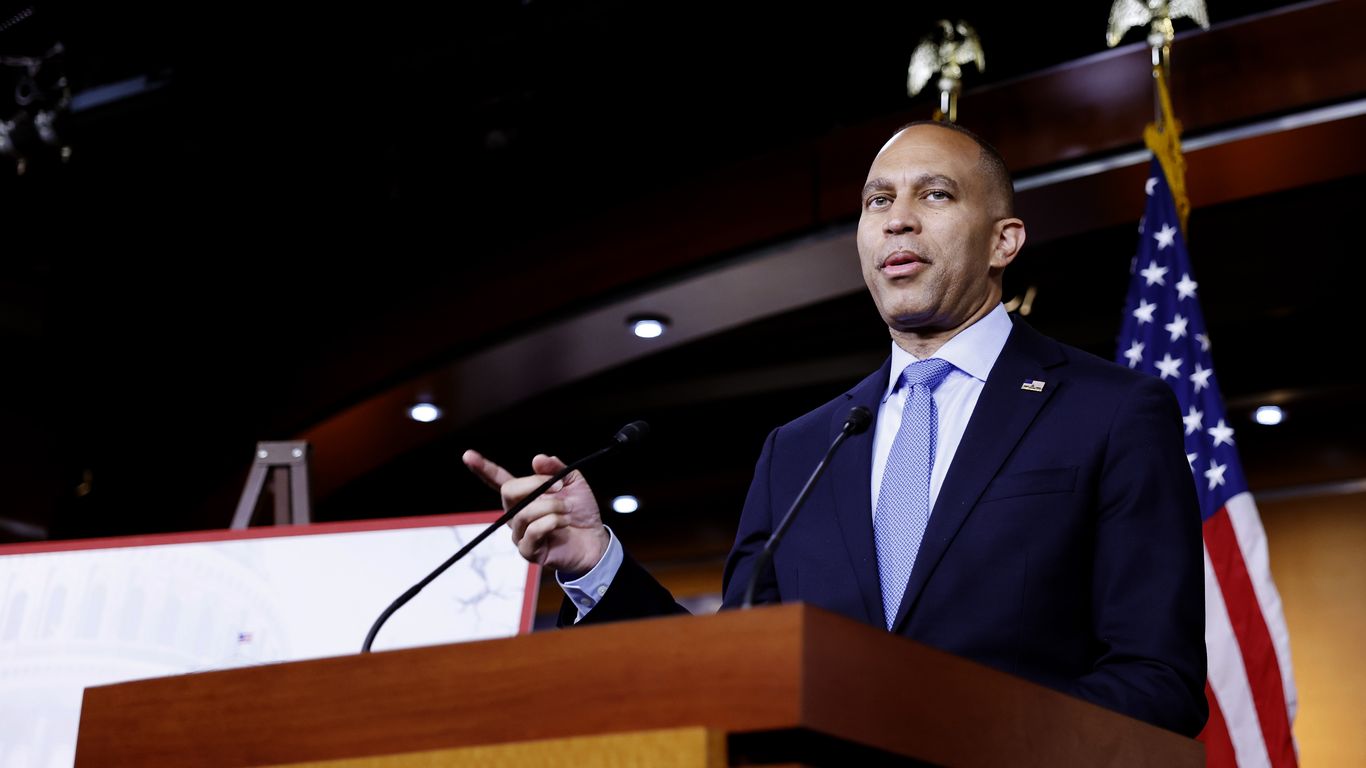Trump Era Legislation: A Deep Dive Into The GOP's Agenda

Table of Contents
Tax Cuts and Jobs Act of 2017
This landmark legislation, often referred to as the TCJA, significantly lowered corporate and individual income tax rates. Its passage represented a core tenet of the Trump administration's economic policy: stimulating growth through tax cuts. The long-term effects, however, remain a subject of ongoing debate.
Impact on Businesses
The TCJA aimed to boost business investment and job creation through lower corporate tax rates.
- Increased corporate profitability: The reduction in the corporate tax rate from 35% to 21% led to increased after-tax profits for many companies. This, proponents argued, would translate into higher investment and job creation.
- Potential for job growth: While some businesses did invest and hire, the impact on job growth was debated. Studies yielded varied results, with some showing a modest positive effect and others finding little correlation.
- Debates on its impact on income inequality: Critics argued the tax cuts disproportionately benefited corporations and high-income earners, exacerbating income inequality. This led to concerns about the distribution of economic benefits.
Details: The TCJA also included provisions related to expensing, international taxation, and the pass-through deduction, all intended to incentivize business investment. The economic consequences are still being analyzed, with economists differing on the extent of its positive impact. Further research into the long-term effects of the TCJA on economic growth and income distribution is needed.
Impact on Individuals
The TCJA also altered individual income tax rates, standard deductions, and the child tax credit.
- Changes in individual tax brackets: While some tax rates were lowered, the standard deduction was significantly increased. This impacted taxpayers in different ways, with some experiencing lower tax bills and others seeing minimal change.
- The standard deduction: The increase in the standard deduction provided significant tax relief for many lower and middle-income taxpayers. However, it also reduced the number of people who itemized deductions.
- Impact on low and middle-income families: The impact on low and middle-income families varied greatly, with some benefiting from the standard deduction increase and others experiencing minimal change or even a slight tax increase.
Details: The effects on different income brackets are complex and depend on factors such as family size, deductions, and tax credits. Analyzing the distributional effects of the tax cuts requires careful consideration of individual circumstances and requires detailed economic modeling to capture the complete picture.
Deregulation Efforts
The Trump administration pursued a significant policy of deregulation across various sectors, arguing it would stimulate economic growth and reduce burdens on businesses. This approach, however, drew considerable criticism for its potential negative consequences.
Environmental Regulations
The rollback of environmental regulations was a significant aspect of the Trump administration's deregulatory agenda.
- Clean Power Plan rollback: The administration withdrew from the Clean Power Plan, a key Obama-era initiative to reduce carbon emissions from power plants.
- Weakening of fuel efficiency standards: The administration weakened fuel efficiency standards for vehicles, impacting fuel consumption and greenhouse gas emissions.
- Impact on air and water quality: These and other rollbacks raised concerns about the impact on air and water quality and public health.
Details: These actions were met with significant opposition from environmental groups and scientists who argued that the rollbacks would worsen climate change and endanger public health. The long-term consequences of these deregulatory measures continue to be assessed.
Financial Regulations
The Trump administration also sought to loosen financial regulations put in place after the 2008 financial crisis.
- Dodd-Frank Act modifications: Several modifications to the Dodd-Frank Wall Street Reform and Consumer Protection Act were implemented, reducing some regulatory requirements for banks and financial institutions.
- Impact on consumer protection and financial stability: Critics argued these changes weakened consumer protections and increased the risk of another financial crisis. Proponents maintained the regulations were overly burdensome and hindered economic growth.
Details: The debate surrounding these changes involved considerable disagreement on the appropriate balance between promoting financial stability and fostering economic growth. The long-term effects of these modifications to financial regulations remain a subject of discussion and analysis.
Immigration Policies
The Trump administration implemented significant changes to immigration laws and enforcement, focusing on border security and restricting immigration.
Border Security
A key aspect of the administration's immigration policy was enhancing border security.
- Funding for the border wall: Significant funding was allocated to the construction of a wall along the US-Mexico border, a central campaign promise.
- Changes in immigration enforcement policies: Enforcement policies were tightened, leading to increased deportations and a stricter approach to immigration enforcement.
- Impact on asylum seekers: Policies impacting asylum seekers were implemented, including restrictions on asylum claims and increased detention of asylum-seekers.
Details: The construction of the border wall faced numerous legal challenges and logistical hurdles. The impact on asylum seekers and the overall effectiveness of the border security measures remain debated.
DACA and Other Immigration Programs
The administration's policies also affected existing immigration programs.
- Legal battles over DACA (Deferred Action for Childhood Arrivals): The administration attempted to end the DACA program, which protects undocumented immigrants brought to the US as children. This resulted in protracted legal battles.
- Changes in visa policies: Changes were made to visa policies, potentially impacting the number of immigrants admitted to the US legally.
Details: The legal challenges to DACA highlighted the ongoing debate over the status of undocumented immigrants and the need for comprehensive immigration reform. Changes to visa policies impacted various sectors, including the tech industry and academia, which often rely on foreign workers.
Conclusion
The Trump era witnessed the passage of significant legislation impacting numerous areas of American life. From sweeping tax reforms and extensive deregulation to impactful changes in immigration policy, the "Trump Era Legislation" continues to shape current political debates and long-term policy outcomes. Understanding the intricacies of these legislative actions, their intended and unintended consequences, and their ongoing effects is vital for informed civic engagement. Further research into specific aspects of this "Trump Era Legislation," including the long-term economic consequences of the TCJA and the environmental impact of deregulation, is encouraged to foster a more complete understanding of this pivotal period in American history. Continue exploring the complexities of Trump Era Legislation to gain a more comprehensive perspective on this impactful period.

Featured Posts
-
 Eminem Explains The Gwen Stefani Lyric That Caused A Stir
May 27, 2025
Eminem Explains The Gwen Stefani Lyric That Caused A Stir
May 27, 2025 -
 Streamer University Kai Cenats Guide To Success On Twitch And Beyond
May 27, 2025
Streamer University Kai Cenats Guide To Success On Twitch And Beyond
May 27, 2025 -
 When Does Fire Country Return Season 3 Episode 16 Premiere Date And Viewing Options
May 27, 2025
When Does Fire Country Return Season 3 Episode 16 Premiere Date And Viewing Options
May 27, 2025 -
 Coupe De La Caf L Algerie Termine Sur Un Match Nul Decevant
May 27, 2025
Coupe De La Caf L Algerie Termine Sur Un Match Nul Decevant
May 27, 2025 -
 Sxsw 2025 Six Easter Eggs Discovered In Alien Earth Shorts
May 27, 2025
Sxsw 2025 Six Easter Eggs Discovered In Alien Earth Shorts
May 27, 2025
Latest Posts
-
 Dont Miss Out 30 Off Lavish Hotels This Spring
May 31, 2025
Dont Miss Out 30 Off Lavish Hotels This Spring
May 31, 2025 -
 Up To 30 Off Lavish Spring Hotel Bookings
May 31, 2025
Up To 30 Off Lavish Spring Hotel Bookings
May 31, 2025 -
 Book Now And Save 30 Off Lavish Spring Hotel Stays
May 31, 2025
Book Now And Save 30 Off Lavish Spring Hotel Stays
May 31, 2025 -
 Spring Hotel Sale Get 30 Off Your Lavish Stay
May 31, 2025
Spring Hotel Sale Get 30 Off Your Lavish Stay
May 31, 2025 -
 Luxury Hotel Spring Sale 30 Discount
May 31, 2025
Luxury Hotel Spring Sale 30 Discount
May 31, 2025
